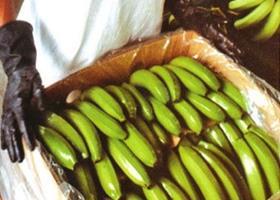
The Philippines’ banana industry will become the country’s largest export earner within the next three years, overtaking the coconut sector to hit an annual value of US$1bn.
That’s the prediction from Stephen Antig, CEO of peak body Pilipino Banana Growers and Exporters Association (PBGEA), which represents industry interests in what has been for some time Asia’s largest exporter of fresh bananas.
“The big improvements in the industry’s supply and value-added production chain brought about by the Philippine government’s accelerated investments on infrastructure facilities and human resource development augurs well for a more robust economy in the home region of the Philippine export banana industry, Mindanao,” he told Fruitnet.com.
Mindanao’s export earnings have been steadily climbing; in 2009 the region’s balance of trade stood at US$1.5bn. Cavendish banana exports contributed US$720m towards that figure.
The Philippine banana industry has been receiving a good deal of support from the country’s government over the past 12 months, spurred on in part by the virtual closure of the Iranian market to the Philippines in October last year.
The cause of the ‘ban’ is still unclear; some sources tell Fruitnet.com it was caused by an Iranian lack of foreign currency, while some say the country’s government ceased issuing out import licences. Whatever the culprit, however, the dramatic impact on Philippine banana growers and exporters has helped push industry issues to the forefront of the political conversation.
“One positive consequence of the ‘Iran Crisis’ is that it riveted public and government attention to the vulnerability of the Philippine export banana industry’s Middle East market, particularly to financial instability in importing countries like Iran,” explained Mr Antig.
Policy support for the banana industry has now been given preferential support from the Senate Committee on Agriculture and Food, he detailed, and senators are now pushing for top-level trade missions to Japan, South Korea and China to secure preferential treatment for Philippine bananas under the ASEAN FTA and other bilateral agreements.
“`PBGEA president Alexander N` Valoria also proposed that the Philippine government be more aggressive in securing the entry of Philippine bananas to Australia,” Mr Antig said, admitting the organisation is not optimistic the Australian government will reconsider the current stringent entry protocol.
The Iranian market is now showing signs of recovery, however, and discussions are currently underway with Iranian ambassador Ali Mojtaba Rhouzbehani for a barter-trade agreement, swapping Philippine fresh fruit for Iranian oil derivatives, pharmaceuticals and fertilisers, according to Mr Antig.
Banana production in the country has been holding steady for the last six months, on the back of relatively calm weather, but the drought in the first half of the year meant overall production for 2010 was 9 per cent lower than the previous year, at 142,446,321 boxes.
“Banana production is good; despite the El Niño and the Iran crisis, production is still up,” said Francisco Lorenzo of major exporter Lapanday Foods Corporation. “For the second half of the year, there were no significant `weather` calamities.”
Exports to Japan have been relatively steady, but slightly lower than the previous season. Volumes sold into the market over 2010 hit 841,549 tonnes, down on 2009’s 909,012 tonnes.
“Japan volumes are down from last year as the banana diet disappeared, however the levels of imports are slightly higher than pre banana diet levels,” said Mr Lorenzo.
The number of bananas heading to China is on the rise, however, with the market presenting a good outlet for fruit previously intended for Iran. Exports there rose slightly over 2010 to around 230,000 tonnes, up from 2009’s 226,386 tonnes.
“Exports in China are soaring high,” said Michelle Araneta of highland banana grower-marketer Apoverde Trading Corp. “For highland bananas, they sometimes refuse to buy them because they find this type of banana `is similar to` their local bananas. They always go for lowland bananas.”



